Dear friends,
This month marks the one-year anniversary of the pandemic shutdown in the U.S. and the tumultuous year that followed. It is hard for any of us to imagine a more challenging time. But as I reflect on the past year, I am struck most of all by the great things we achieved together. Our teams were quick to adapt to the new situation and pivot to create new opportunities when faced with circumstances beyond our control. I feel privileged to share with you some of the many uplifting ways we stayed safe and stayed on mission, courtesy of your support.
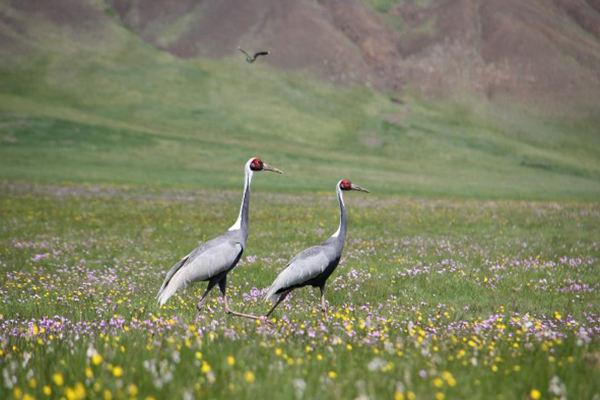
Strengthening Protected Areas for Cranes— and So Much More
Many countries are struggling to support their national parks during the pandemic, especially with crashing tourism revenue and escalating health care costs. In Zambia, we negotiated a long-term agreement with the government and other partners to help manage two national parks and a vast game management area on the wildlife-rich Kafue Flats.
We deepened our support for law enforcement, community livelihoods, floodplain restoration, and research and monitoring so people and parks can thrive together. In Mongolia, we committed to the new Khurkh-Khuiten River Valleys National Nature Reserve—the most important breeding ground for White-naped Cranes—working in partnership with the Mongolian Wildlife Science and Conservation Center to find a balance between traditional livestock herders and this fragile landscape.
In China, our Yangtze Basin Program Officer Jin Jiefeng mapped crane distribution in relation to water depth and tuber density for his M.S. degree, helping managers at Poyang Lake National Nature Reserve ensure winter habitat is available for endangered cranes, even during years of extreme flooding. We are working toward best management practices for nature reserves across China that secure more than 70 million areas of habitat for cranes and many species.
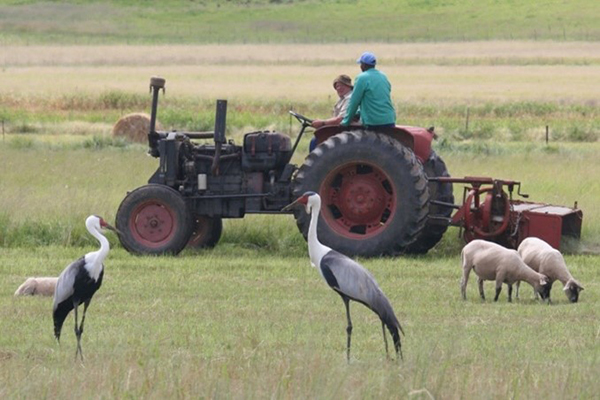
Helping Farmers and Ranchers Conserve Cranes
In other places, the future of cranes depends on private lands outside protected areas. In Texas, we hired a new Director of Land and Water Conservation and a biologist to expand our efforts with ranchers outside of Aransas National Wildlife Refuge as the Whooping Crane population grows and spreads along the coast. In the Ayeyarwady Delta of Myanmar, Sarus Cranes depend on floating rice interspersed with healthy wetlands. Our team is creating Sarus Rice products that make this traditional rice a profitable alternative to industrial rice production.
In Rwanda, we helped more than 3,000 households grow Napier Grass to reduce livestock pressure and human disturbance in Rugezi Marsh and stabilize erosive soils on their upland farm plots – and recorded a record number of Grey Crowned Cranes on the marsh in 2020. Here in the U.S., we are expanding the use of safe avian deterrents like Avipel that prevent crop damage and other ways to compensate farmers who support cranes and wildlife on their lands.
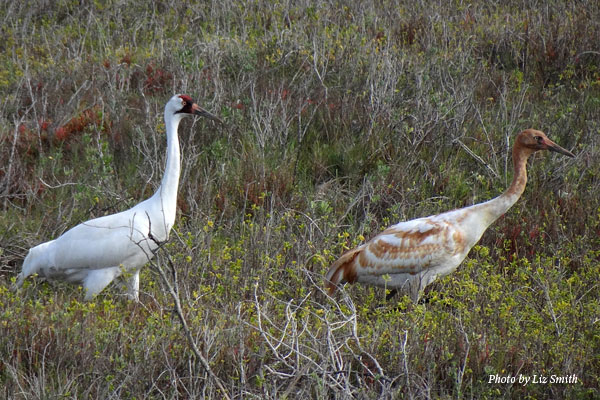
Fighting and Adapting to Climate Change
One of the keys to fighting climate change is by naturally storing carbon in our forests, grasslands, and wetlands and preventing carbon release to the atmosphere when these natural lands are lost or degraded. In the stunning Drakensburg region of South Africa, we are securing a vast landscape of wetlands and grasslands for the long-term through Biodiversity Stewardship agreements linked to the carbon-offset market, benefitting farmers and cranes. We will take lessons from this project to secure many other large floodplains and grasslands where we work.
In Kenya, we are setting up demonstration sites and training extension workers to reach more than 1,000 farmers with climate-smart agricultural practices that promote more drought-resistant crops and improve moisture retention on farms where cranes breed. In Texas, we are using our model of how sea-level rise and freshwater inflows will affect coastal wetlands and inlands, using this knowledge to guide the purchase and conservation of future wetland habitat that endangered Whooping Cranes will need to fully recover.
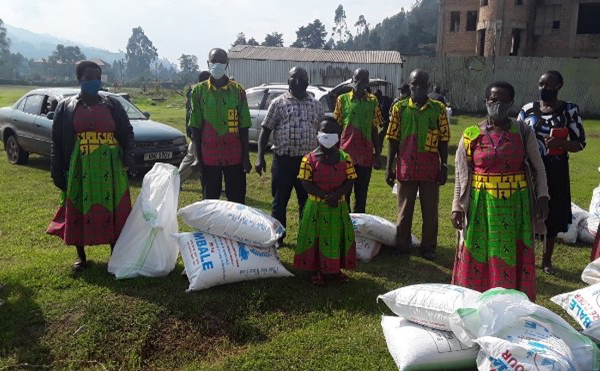
Caring for Communities Who Care for Cranes
At the International Crane Foundation, we know that lasting conservation solutions must benefit the people who share their lands with cranes. Our team in South Africa provided food relief parcels for more than 1,000 people facing hunger through the connection they developed with crane custodians and their communities in the Drakensburg and Highland Grasslands of South Africa. Across East Africa, we helped farmers feed their livestock and produce more milk, honey, raise poultry, and other alternative livelihoods that reduce pressure on wetlands where cranes breed.
We employed 150 households around the Kafue Flats in Zambia to cut invasive shrubs, one of the few opportunities for income in this cash-strapped economy—while restoring hundreds of acres of degraded wetland. In China, teachers embraced our environmental education curriculum in their virtual programs during the shutdown, laying the groundwork for us to establish a regional education network across Russia, North and South Korea, and Mongolia, as well as China.
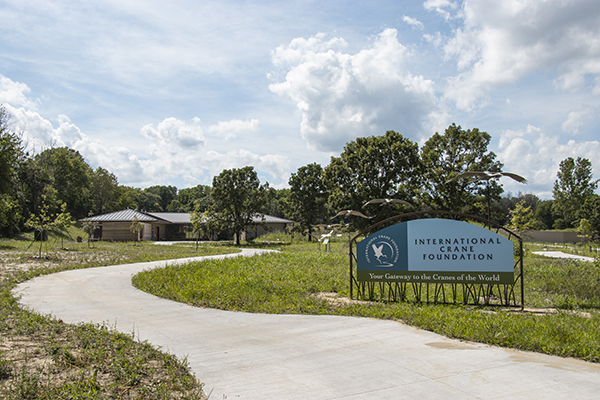
Caring for Our Team, Our Cranes, and Our Beautiful Site
Our captive crane population remained safe and healthy thanks to a dedicated team of essential crane care, veterinary staff, and interns on our campus. We adapted our field teams to COVID restrictions, and we continued important monitoring and outreach of the reintroduced Whooping Cranes, including the capture and marking of four wild-hatched chicks we followed on migration. We completed our renovations, and our stunning new exhibits will dazzle visitors this year as we reopen on May 1!
You can view great “From the Field” webinars about all of these projects and much more on our YouTube channel.
Elegant and endangered, cranes bring us together and inspire us to find lasting conservation solutions. We will carry many of the lessons of the past year with us long into the future, as we grow and expand our programs and impact. Thank you so much for your continued support and partnership through the pandemic, as we seek a healthier planet for cranes, ourselves, and all life on earth.
 Wishing you good health and peace in the days ahead,
Wishing you good health and peace in the days ahead,
Rich Beilfuss
President and CEO
